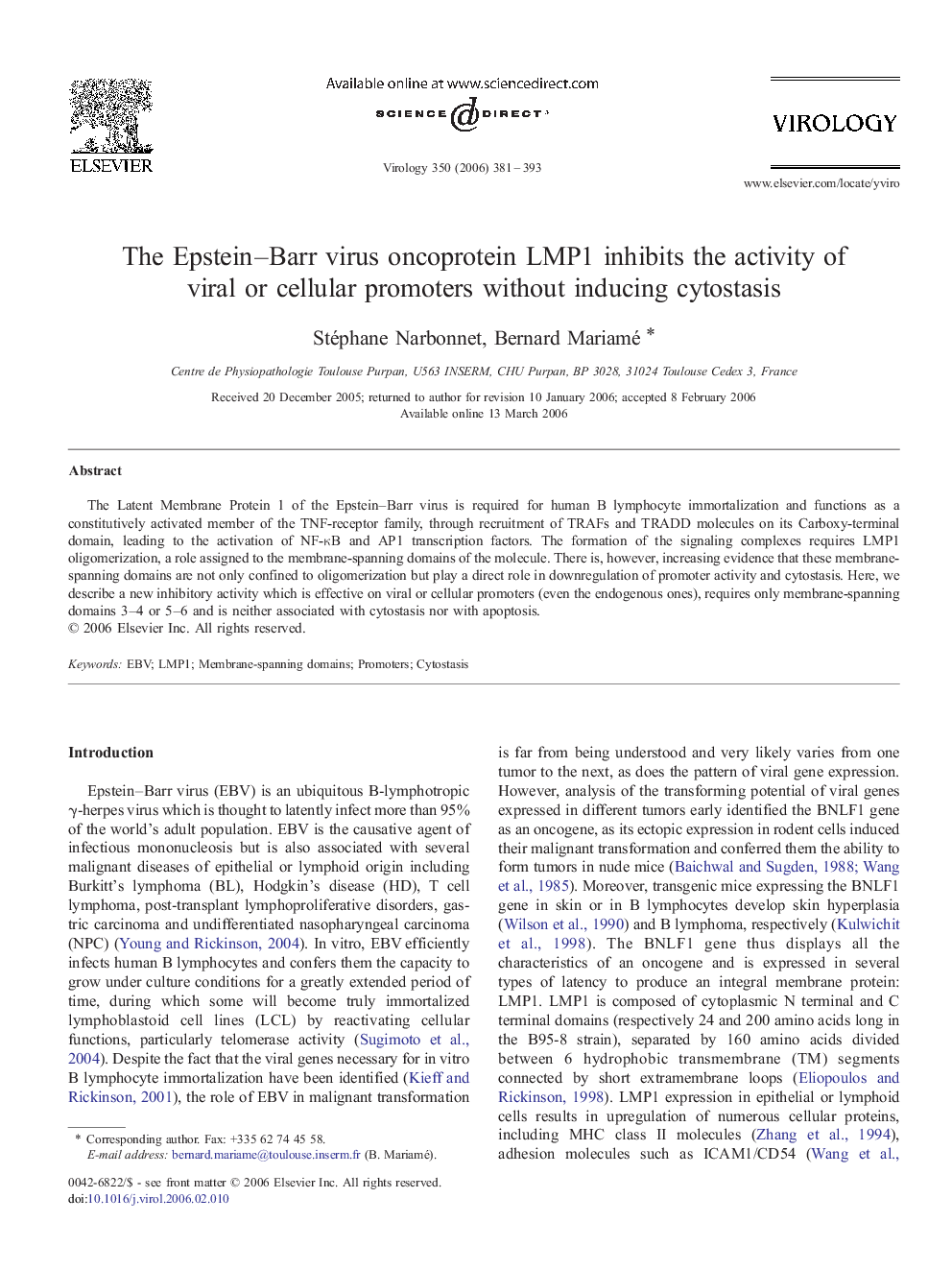| Article ID | Journal | Published Year | Pages | File Type |
|---|---|---|---|---|
| 3427314 | Virology | 2006 | 13 Pages |
The Latent Membrane Protein 1 of the Epstein–Barr virus is required for human B lymphocyte immortalization and functions as a constitutively activated member of the TNF-receptor family, through recruitment of TRAFs and TRADD molecules on its Carboxy-terminal domain, leading to the activation of NF-κB and AP1 transcription factors. The formation of the signaling complexes requires LMP1 oligomerization, a role assigned to the membrane-spanning domains of the molecule. There is, however, increasing evidence that these membrane-spanning domains are not only confined to oligomerization but play a direct role in downregulation of promoter activity and cytostasis. Here, we describe a new inhibitory activity which is effective on viral or cellular promoters (even the endogenous ones), requires only membrane-spanning domains 3–4 or 5–6 and is neither associated with cytostasis nor with apoptosis.
